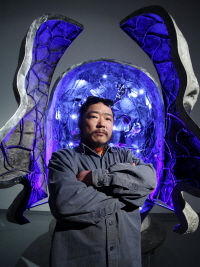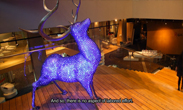Donghun SUNG's Solo Exhibition_curated by kyu Tae PARK
It is very natural that various forms seen in Sung's works should be reminiscent of the classical Chinese book Shan Hai Ching ("The Classic of Mountains and Seas"). This book depicts numerous ancient Chinese monsters, which were created by people in their imaginations. It created new, fantastic figures by using parts of different animals interchangeably, and they resemble Sung's works. Sung's sculptures are of combinations of different objects, and many of them are combinations of various animals. None of them are combinations simply stacked or piled in tiers. His sculptures instead are in the form of weak objects supporting the heavy weight of the entire piece, addressing social issues in a serious way. Sung collects various objects in his everyday life, and his studio is packed with objects he has collected from everywhere. Thus, he has countless different shapes in his mind and can refer to any of them whenever needed for production of his artwork. Such being the case, we cannot say that Sung's sculptures are entirely created in his imagination, but it is obvious that his works are essentially products of his imagination. Throughout the world, imagination is a key word of contemporary art. Through imagination, an artist limitlessly expands the space of his artwork, and establishes his own identity as an artist. Sung often journeys to barren lands such as deserts to do his artwork. Deserts are not merely one type of space; they are places filled with adventure. In fact, Sung considers a desert even much more than that because it has romantic imagination. In such an extreme environment, Sung's energy for creation surges. This is what makes Sung's works so unlike ordinary works created in ordinary environments.















